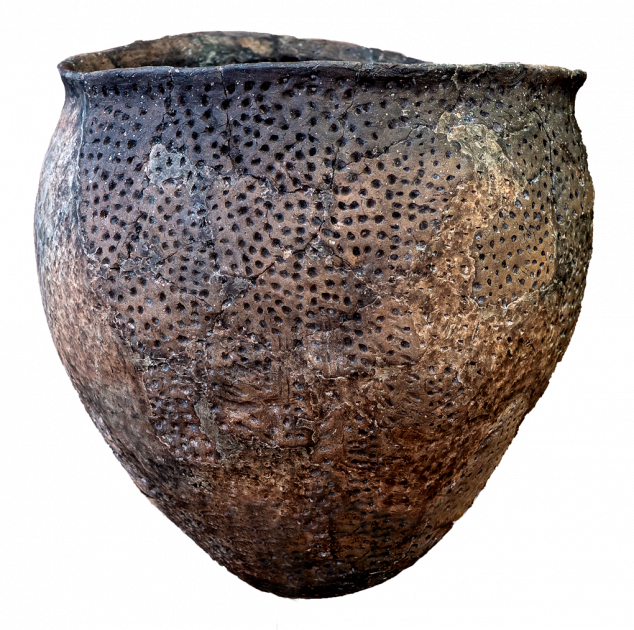Clay vessel

A big clay pot with rounded bottom is made of clay dough with crushed up burned shells of fresh-water oysters, fuzz and small feathers of waterfowls, small fish bones and other organic matters added. Such pots were made by hands without potter's wheel and were fired on bonfire with the temperature less than 500 degrees. The walls of the vessel are quite thick, there are traces of burnt food on the inside and traces of soot on the outside.
Similar vessels were made in large numbers by ancient settled hunters-fishermen of a forestal area of the Russian plain and could be used both for food storage and cooking food on a fire. Such vessel held more than 30 liters of contents, probably; it was possible to prepare food for a big family at once in it. Quite complex recipes of ceramic dough and rich, diverse ornamentation of such vessels still lead to bewilderment of researchers, because, according to the observations obtained during modern experiments on manufacturing and using such vessels on a fire, no conclusions about the special efficiency of using that technology have been obtained.
Exhibits' purpose of use – a storage basin for cooking and keeping food.
